Beef Bibimbap is a quick and easy Korean rice bowl mixed with assorted vegetables, savoury banchan, sweet spicy beef, all topped with an egg. It’s the perfect meal for busy weeknights.
For weeknight dinner solutions, look no further! Here at Dish ‘n’ the Kitchen we’re big fans of fast and flavourful. Check out this mouth watering Thai Red Curry Coconut Soup you can make in under 30 minutes. Need another curry in a hurry? Kabocha Squash Daal is perfect for a substantial meatless meal.

Want to save this recipe?
Enter your email below and get this post sent straight to your inbox. Plus, I’ll send you my weekly newsletter featuring the newest and best Dish ‘n’ the Kitchen recipes every week!
Sweet and Spicy Beef Bibimbap
Who doesn’t love speedy dinners jam packed with veggies, flavours and textures? This Beef Bibimbap ticks all of those boxes. It’s a tasty rice bowl bursting with crisp, fresh veggies, protein, and classic Korean Banchan.
The seasoned ground beef combines with a sweet and spicy sauce made with grated sweet apple pears, gochujang (Korean fermented chili paste), gochugaru (Korean dried chilies), brown sugar, sesame oil, and soy sauce.
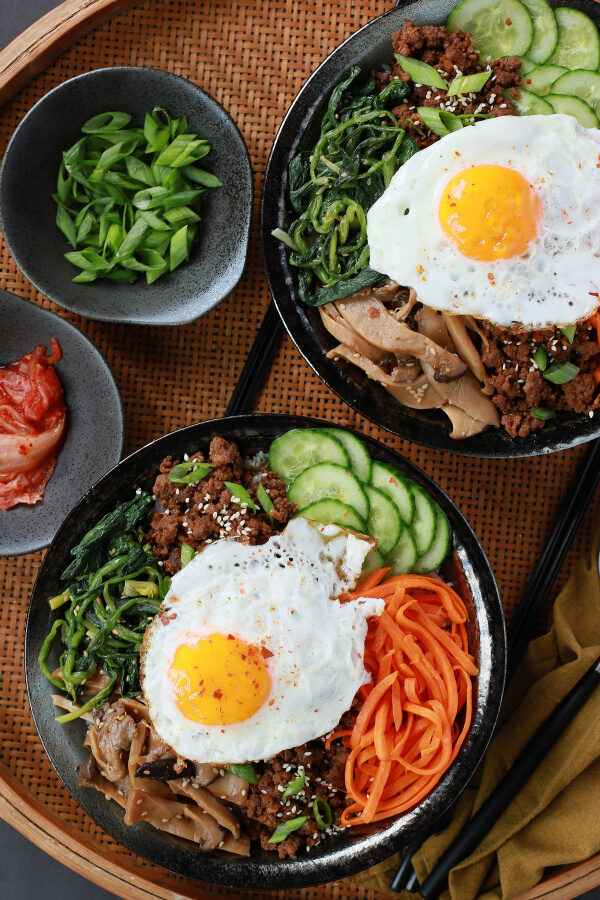
What is Bibimbap?
Bibimbap is perhaps THE most quintessential Korean dish, popular in every Korean household or restaurant. ‘Bibim‘ means ‘to mix various ingredients’ and ‘Bap‘ means ‘rice’ it literally translates as ‘mixed ingredient rice bowl’. Yeah, you heard that right…Bibimbap is the OG rice bowl.
Exact origins are unknown, though this dish has been around for more than 200 years. It may have been invented as a way to use up leftovers or become popular as a simple dish that requires few utensils/pots.
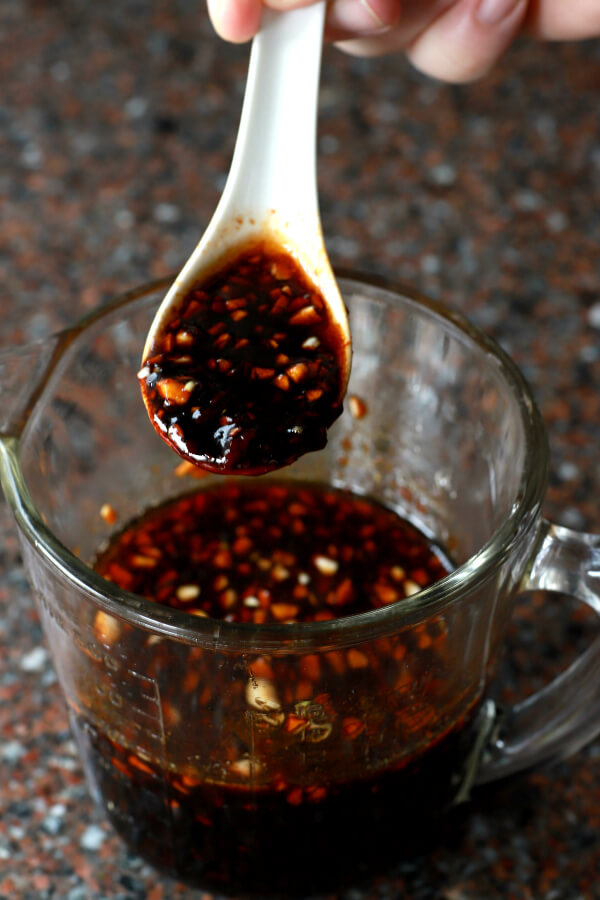
Others speculate that the dish arose as a result from the traditional practice of mixing all the food offerings made at an jesa (ancestral rite) in a bowl before partaking of it.
Throughout Korea, the dish is served hot and the ingredients are stirred together just before eating. There are many variations of the dish, as it varies according to region.

Bibimbap Variations
There are four main styles of this Korean dish according to the local flavours of each region. The oldest, Jeonju Bibimbap is from a southern province of the same name and originated from the Joseon Dynasty royal cuisine.
This variation has over 30 ingredients including bean sprouts, yellow mung bean jelly, long fermented soy sauce, and seasoned raw beef over rice cooked in beef broth.
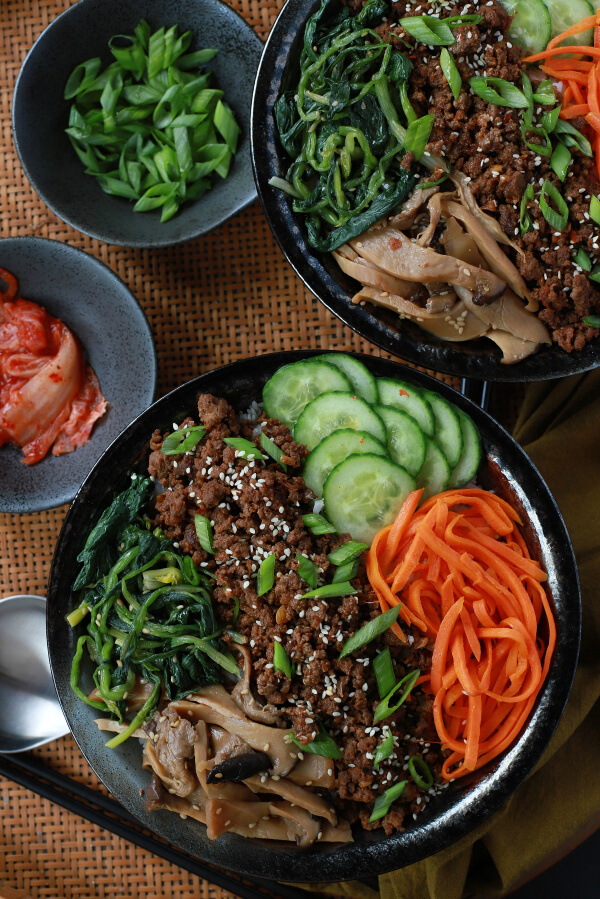
Dolsot Bibimbap is a variation based on method of cooking in which the ingredients are placed a sizzling hot stone bowl. The bowl is so hot it fries the raw egg topping and makes the rice extra crispy.
Yakcho Bibimbap is a style that is popular in Jecheon, a region famous for growing medicinal herbs.
Another version is the tasty seafood based version eaten in coastal regions. Hoedeopbab Bibimbap may contain raw tilapia, octopus, tuna, or salmon.
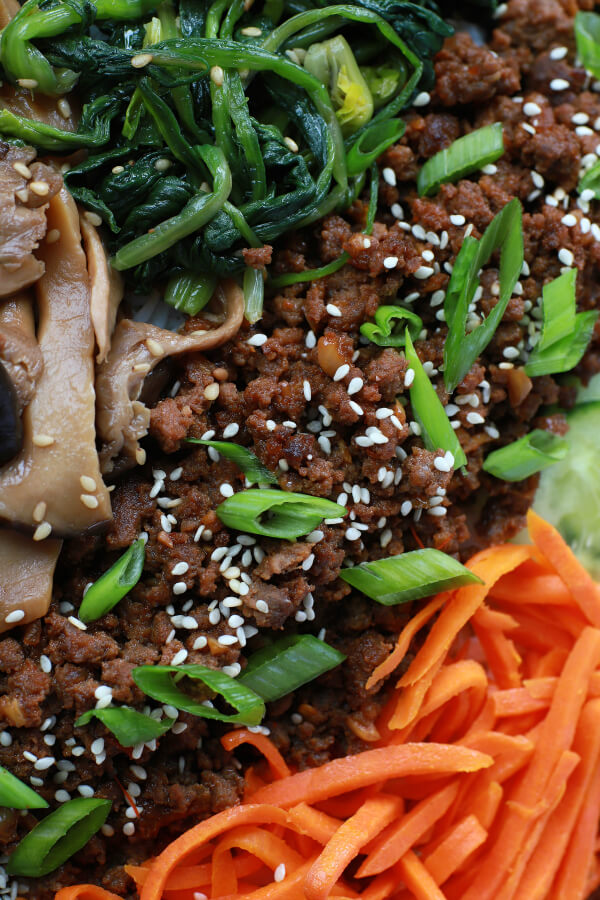
Common Korean Ingredients and Culinary Terms
Click to discover more about Korean Cuisine
Gochugaru – Korean dried chile powder made from sun-dried Korean red chili peppers (called taeyang-cho).
Gochujang – a thick spicy paste made from gochugaru, glutinous rice, fermented soybeans, salt, and barley malt powder. It comes in five levels of spiciness which range from mild hot to extreme hot.
Doenjang – fermented soy bean paste.
Namul – seasoned and sautéed vegetables.
Kimchi – traditionally fermented vegetables.
Banchan – small side dishes.
Dolsot – stone pot
Bibimbap Ingredients
The ingredients in this Bibimbap recipe are simple and straightforward. They consist of a variety of fresh vegetables, easy banchan, protein seasoned with simple but authentic Korean flavours, and few simple garnishes.
In a bowl of Bibimbap, each ingredient is carefully and beautifully arranged in the bowl. In Korean cuisine, each ingredient has a symbolic purpose; both directional and as nourishment for your body.
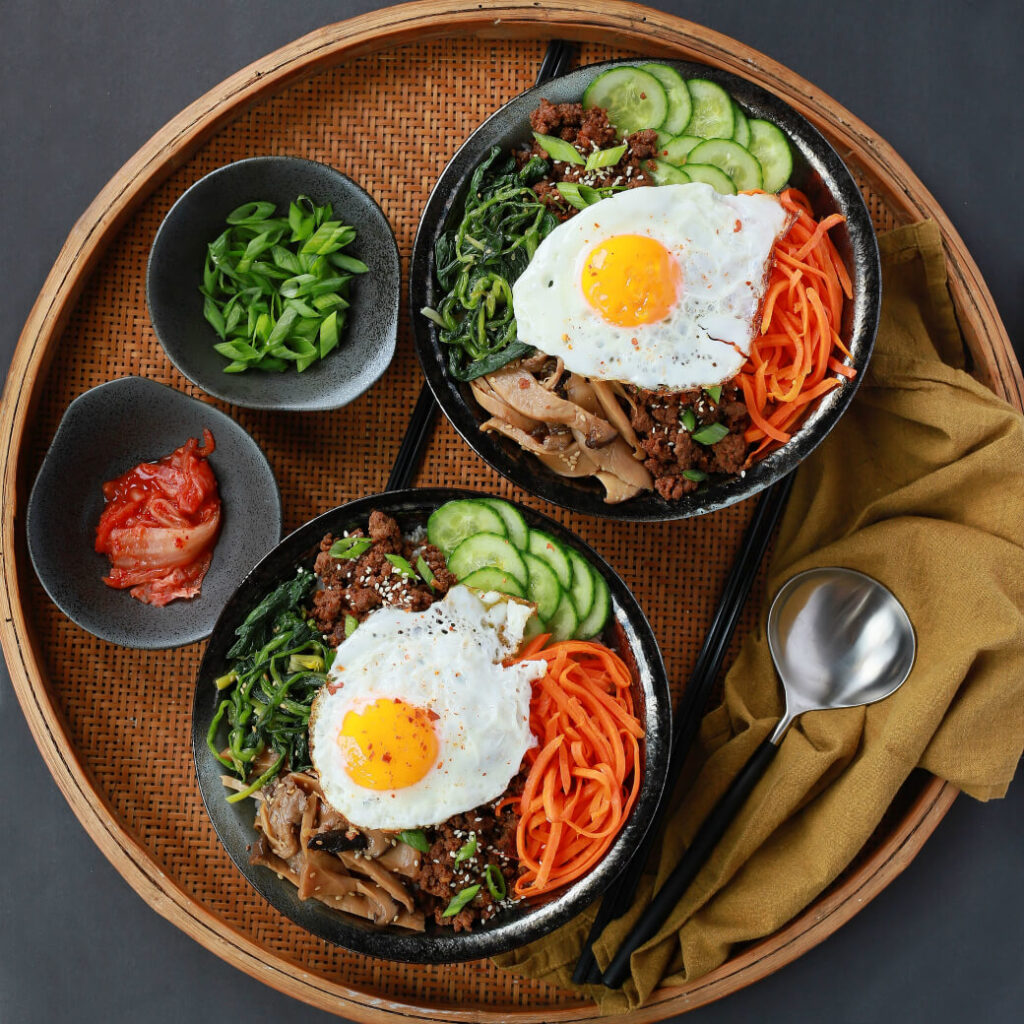
You can customize your bibimbap according to what you have in your fridge or have available at the nearest grocery store. Consider adding the following to your bowl:
- watercress, spinach, gai lan, or seasoned seaweed
- bean sprouts, daikon, bellflower root, or gosari
- spicy cucumber salad
- sautéed zucchini, cabbage, or eggplant
- switch up the proteins. Use seafood, ground pork, chicken, or even tofu.
- add sauces such as gochujang thinned with a bit of apple cider vinegar, or use one of these great sauces.
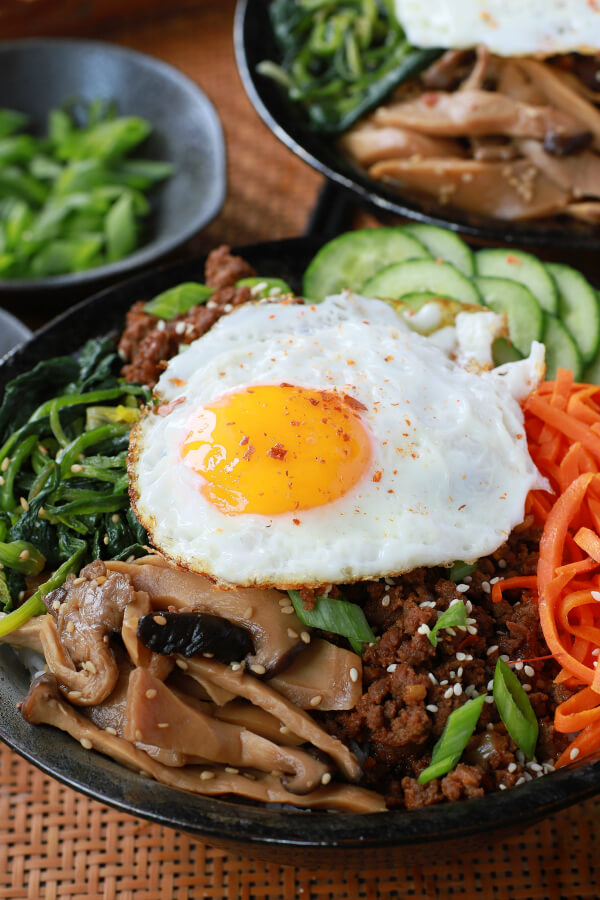
How to Make Beef Bibimbap
While more traditional versions contain raw beef (or beef tartare) and raw egg, this recipe contains both of these in cooked form. While it may seem like there are quite a few components to prepare, most take mere minutes.
Begin the dish by either sourcing the banchan and kimchi from a Korean market or by making them yourself (see recipe card for links to great banchan options). Next, thinly slice the cucumbers and cut the carrots into a matchstick shape. It really is that easy.
Cook the rice using your preferred rice cooking method then turn your attention towards the ground beef. Simply mix the seasonings in a medium bowl and then add the beef. Let them sit together in the pan for about 30 minutes to allow the flavours to mingle.

Next, sauté the beef mixture in a skillet over medium high heat for 10-15 minutes or until done. Fry the eggs sunny side up in a skillet over medium heat.
Finally, assemble the bowls beginning with the rice. Arrange the fresh vegetables, ground beef, and banchan in groups. Sprinkle sesame seeds and sliced green onion over the entire dish then top with a fried egg.
How to Eat Beef Bibimbap
Picture a lovely bowl of beautifully arranged ingredients topped with a glorious fried egg. Don’t you want to just dig right in? First things first, grab your chopsticks and mix it up!
Break up the egg and let that yolk ooze all over to mingle with the beef. Better yet, add some sauce and kick up the heat. This is a no pressure, no holds barred meal.
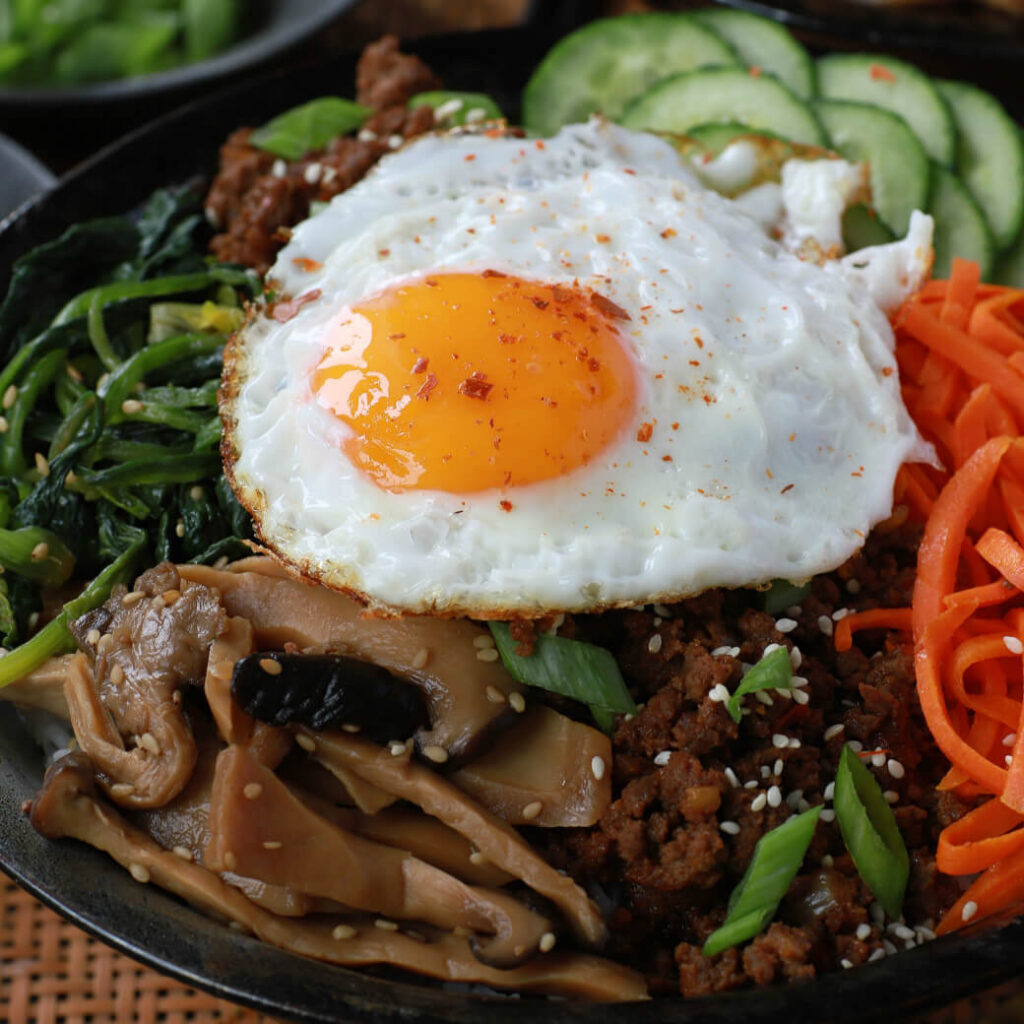
Is Bibimbap Healthy?
It really depends on what you put into the bowl. Each component of Bibimbap has the potential to nourish your body. If you add a mixture of cooked and raw vegetables, the bowl will be high in fiber, vitamins, minerals, heart healthy fats, and anti-inflammatory goodness.
Keep this Bibimbap healthy by portioning the rice accordingly. Use lean proteins and if you are watching your sodium intake, feel free to use reduced sodium soy sauce or reduce the amount of sauce you drizzle on your bowl.
Whatever you do, don’t leave the gochujang sauce out of the beef. It really gives this bowl that classic Bibimbap flavour. It just wouldn’t be the same without it.
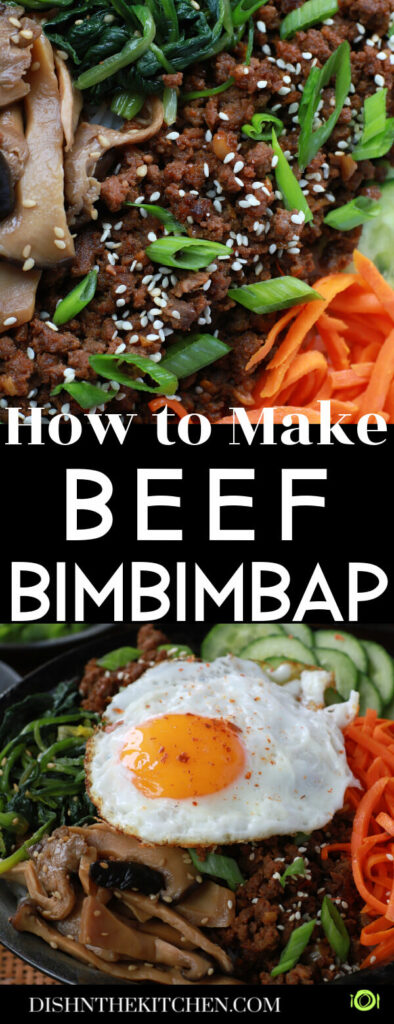
Korean Beef Bibimbap
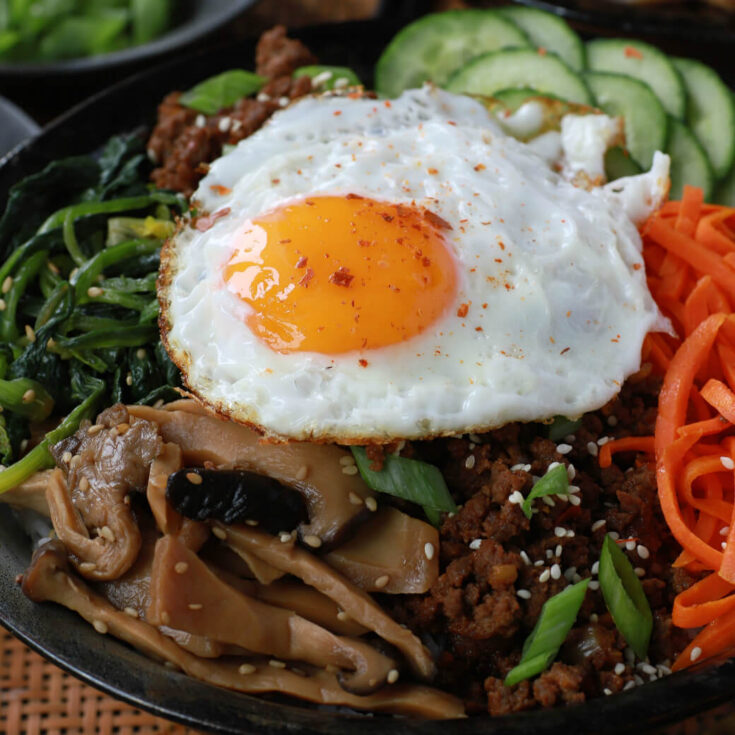
Beef Bibimbap is a quick and easy Korean rice bowl with assorted vegetables, sweet spicy beef, all topped with an egg. It’s the perfect meal for busy weeknights.
Ingredients
- 1 lb ground beef
- 1/2 apple pear; grated (or use green apple)
- 1/4 cup soy sauce
- 2 tbsp sesame oil
- 2 tbsp brown sugar
- 3 tbsp garlic; minced
- 2 tbsp gochujang
- 1 tsp gochugaru
- 1 1/2 cups rice; uncooked
- 1/2 cucumber sliced into rounds
- 2 carrots; cut into matchsticks
- 2 cups kimchi
- Shiitake Mushroom Banchan (Beosut Bokkem)
- Watercress or Spinach Namul
- 2 tbsp sesame seeds
- 2 green onions; sliced
Instructions
- Start by cooking the rice using preferred method.
- *How to Prepare Banchan recipes below in notes*
- Place ground beef in a large frying pan or wok. Grate the apple pear over the beef.
- Mix up the sauce (soy sauce, sesame oil, brown sugar, garlic, gochujang, gochugaru) in a small bowl then mix into the beef. (leave a small portion out to pour on the rice bowl later if you like) Let the flavours mingle for 30 minutes or so.
- Prepare fresh veggies (cucumbers, carrots, green onions).
- Cook beef over medium-high heat.
- Fry four sunny side up eggs.
- Assemble four bowls beginning with four portions of rice, top with beef, then add veggies and banchan around the beef. Top with sesame seeds and green onions, then place fried eggs on top.
Notes
Nutrition Information:
Yield:
4Serving Size:
1Amount Per Serving: Calories: 580Total Fat: 29gSaturated Fat: 9gTrans Fat: 1gUnsaturated Fat: 17gCholesterol: 101mgSodium: 1854mgCarbohydrates: 42gFiber: 5gSugar: 14gProtein: 38g
Nutritional calculation was provided by Nutritionix and is an estimation only. For special diets or medical issues please use your preferred calculator.


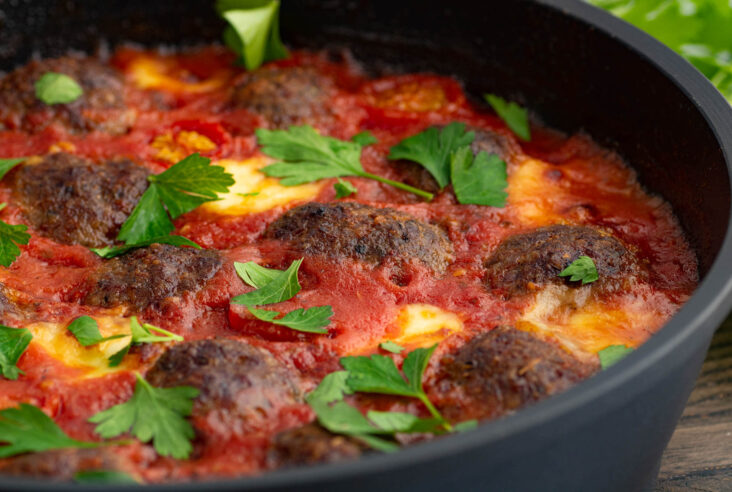
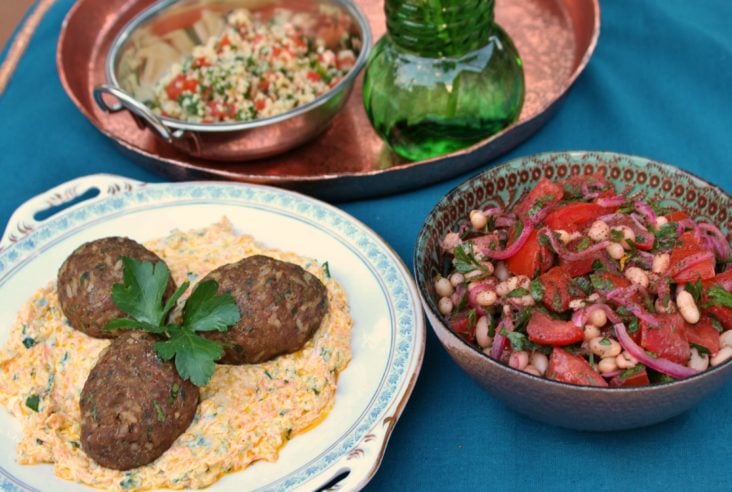
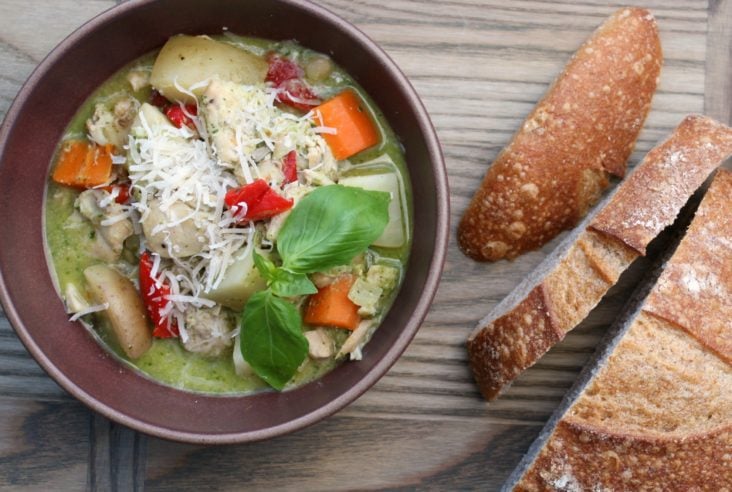
So much flavor, so much deliciousness! Love this dish!
Yep, maximum flavour for minimal effort.
If there’s a time in my life I’m looking for easy, busy night recipes, it’s NOW! With the kids back to school, this is going to be the perfect dinner – can’t wait!
Yes!! And it’s so easy to double the ground beef portion too. Happy back to school to you!
Oh my god! This is absolute favorite of mine. Bibimbap is so amazing with so many amazing things all loaded in one bowl. Best meal ever!
This looks so tasty and flavorful. Love the combination of the yummy looking beef and mushroom and the refreshing vegetables!
So many great flavours in one bowl!
This rice bowl looks absolutely delicious and so satisfying! Perfect flavor combination, need to make it next week!
Great idea. I think we will be making it again too.
I can’t remember the last time I tasted Beef Bibimbap! This recipe looks really delicious. Will definitely make this at home.
Give it a go! We’ll be making it again soon too.
Ooh what a hearty and delicious bowl! This sounds so good…I love the variety of flavors here. It’s packed with so much nutrition! Definitely need to make this 😀
It’s so tasty that it is difficult to remember that it’s also quite healthy!
Yum! How fabulous does this dish look? I used to work at a restaurant that offered an amazing Korean rice bowl but we served it in the heaviest bowls – like break your wrist heavy – but the presentation was beautiful, just like yours. 🙂 That egg is begging me to stab into it. Thanks, Bernice! I have to try this for sure.
Oh, those must be the stone bowls. That must have been so hard to serve all shift long.
I certainly love speedy dinners that are packed with veggies, flavors and textures! Sweet and spicy is my favorite flavor combination! This looks fantastic!
Me too! Hard to believe it’s also good for you!
We love going for bibimbap at our favourite Korean restaurant, but I have never made it at home, and why not? Thanks for the inspiration, Bernice! It looks amazing.
I hope you give it a go Colleen, it’s super tasty!
I haven’t had Korean food in so long…I have gochujang in the fridge but I need to see if I can find the other ingredients.
Our closest Korean restaurant has been closed for a year or so…now I have to make my own favourites!
This looks as good as what I get at my favourite restaurant!
Who knew it was so easy?!
love a good bibimbap. we made one the other day with vegan patties toO!
yes!! So tasty, quick, and nutritious!
Bibimbap is one of my favorite Asian dishes! I love stirring it when it’s still hot, the egg cooks, and the rice gets all caramelized. It looks beautiful, Bernice! Customizable and delectable!
Mmmm yes I love a good Dolsot Bibimbap. I bought my sister the special stone bowls and now I can’t find any for myself!
This was my first time trying this dish and it was so delicious! This dish is packed with so many different flavors!
Glad you enjoyed the flavours Kathryn!
I love ordering this dish out but never had a clue how to make it. Thanks for sharing your recipe for beef bibimbap, I’ll be making it soon.
Once you have all the components ready, it’s quite easy. Enjoy!